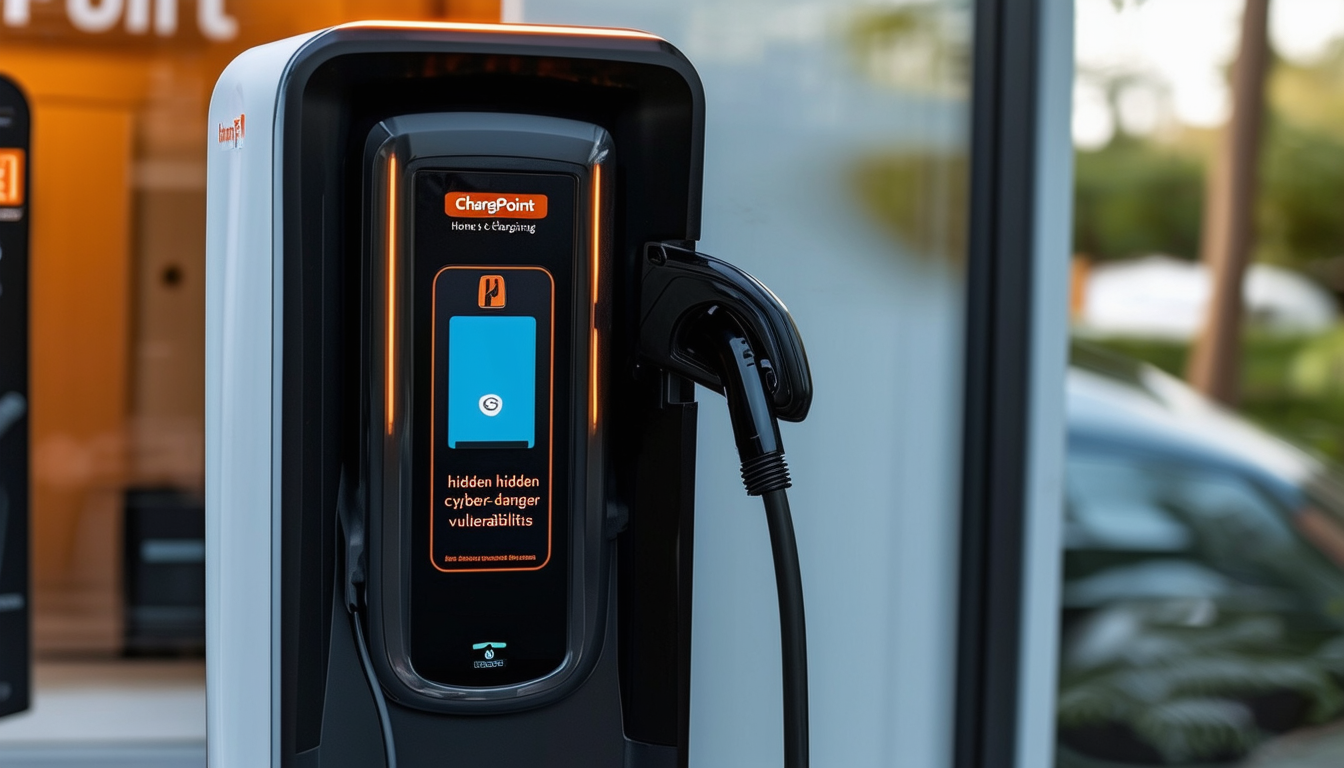Discover how CVE-2025-0762, a critical vulnerability in Google Chrome's DevTools, could impact your...
ChargePoint Flaw CVE-2024-23968 Threatens EV Charger Security

Protect yourself from the hidden dangers of CVE-2024-23968 in ChargePoint Home Flex—learn how to keep your data and devices secure.
Unveiling the Threat: Understanding CVE-2024-23968
CVE-2024-23968 is a critical vulnerability discovered in ChargePoint Home Flex, specifically affecting certain firmware versions. This vulnerability is a stack-based buffer overflow in the function SrvrToSmSetAutoChnlListMsg. The flaw allows unauthenticated attackers to execute arbitrary code remotely, posing a significant risk to businesses and end-users.
Understanding the technical nuances of this vulnerability is key for both business owners and cybersecurity professionals. Knowing what CVE-2024-23968 entails enables proactive measures to be taken to safeguard against potential exploitation.
Business Risks and Real-World Implications
For business owners, the implications of CVE-2024-23968 extend beyond just technical concerns. The potential for operational disruption, data breaches, and loss of customer trust are real and pressing issues. An exploited vulnerability could lead to unauthorized access to sensitive information, causing financial and reputational damage.
Exploitation scenarios vividly demonstrate these risks, making it imperative for businesses to understand and address them. An unmitigated vulnerability could result in significant downtime, legal liabilities, and a tarnished brand image.
Technical Breakdown: How Cyber Attackers Exploit the Weakness
Cyber attackers leverage CVE-2024-23968 by sending specially crafted messages to the SrvrToSmSetAutoChnlListMsg function, triggering the buffer overflow and allowing them to execute arbitrary code. This can result in unauthorized access to the system, data exfiltration, and further exploitation of connected networks.
Detection of exploitation attempts involves monitoring for unusual network traffic, unexpected system behavior, and specific indicators of compromise. Employing robust detection methods is crucial to identify and respond to these attacks swiftly.
The Role of Penetration Testing and Cybersecurity Experts
Penetration testing is a proactive approach to uncover vulnerabilities before they can be exploited. By simulating attacks, businesses can identify and rectify security flaws like CVE-2024-23968. This highlights the importance of hiring skilled cybersecurity professionals who can conduct thorough assessments and provide actionable insights.
Cybersecurity experts bring invaluable expertise to the table, helping to prevent exploitation through comprehensive security strategies. Their role is critical in maintaining a robust security posture, ensuring that vulnerabilities are addressed promptly and effectively.
Implementing Best Practices and Preventative Measures
To mitigate the risks associated with CVE-2024-23968, businesses should implement a range of best practices and preventative measures. Ensuring regular firmware updates is essential to patch known vulnerabilities. Additionally, fostering a culture of security awareness through training programs can help employees recognize and respond to potential threats.
Hardware and network security guidelines should also be followed diligently. This includes securing access points, using strong authentication methods, and regularly auditing systems for compliance with security standards.
-
Sources and Further Reading
- National Vulnerability Database: CVE-2024-23968 Detail: https://nvd.nist.gov/vuln/detail/CVE-2024-23968
- GitHub Advisory: GHSA-v84w-53rg-fgrf: https://github.com/advisories/GHSA-v84w-53rg-fgrf
- CISA Vulnerability Bulletin: Vulnerability Summary for the Week of January 27, 2025: https://www.cisa.gov/news-events/bulletins/sb25-034
